 |
 |
 |
| |
ART Use and HTLV-1 Tied to hrHPV Persistence in Kenyan Women With HIV
|
| |
| |
AIDS 2024, July 22-26, 2024, Munich
Mark Mascolini
A prospective study in 152 Kenyan women with HIV determined that older age, longer use of antiretroviral therapy (ART), and HTLV-1 coinfection favored persistence of high-risk human papillomavirus (hrHPV) [1]. hrHPV persisted for 1 year in 9 of 9 women with HIV and HTLV-1, a retrovirus linked to adult T-cell leukemia [2].
James Kangethe of Nairobi's Kenyatta National Hospital and colleagues from other Kenyan centers reminded AIDS 2024 attendees that women with HIV run a higher risk of infection with hrHPV than women without HIV, a factor in the greater risk of cervical cancer with HIV infection. Research ties 14 hrHPV genotypes to cervical cancer. Women with HIV also run higher risks of infections with other viruses, like HTLV-1, and adult T-cell leukemia affects more than 1 million people globally, killing more than 10%. HIV-1 and HTLV-1 are both retroviruses that home to CD4 T cells and macrophages and share transmission modes.
While rates of some AIDS-defining cancers, like non-Hodgkin lymphoma and Kaposi sarcoma, dropped over recent years, rates of cervical cancer in women with HIV remain concerning. In Kenya cervical cancer has an incidence of 31.3 cases per 100,000 in women with HIV and a death rate of 27 per 100,000. An estimated two thirds of cervical malignancies can be traced to hrHPV.
Kangethe and coworkers planned this prospective cohort study in Kenyan women with hrHPV while taking ART for HIV infection to determine hrHPV persistence, clearance, and synergy with HTLV-1. The study group consisted of women at least 18 years old who had begun having sex. They gave a blood sample for HTLV-1 detection and cervical smears to detect and type hrHPV. After 12 months they gave repeat samples for the same reasons.
Among 152 study participants, age averaged 41.3 years and age at HIV diagnosis 31.4. Almost half of these women, 47.4%, had ever been diagnosed with and treated for a sexually transmitted infection. While ART controlled HIV in 69.9% of these women, 29.6% had "predictable virological failure" with a viral load at or above 1000 copies. A large minority of women, 43.5%, had a CD4 count below 200, while 37.0% had a count of 500 or higher.
After 12 months of follow-up, hrHPV persisted in 89.5% of these women and cleared in 10.5%. Persistence occurred most often with hrHPV genotypes 52 (45%), 16 (22.4%), and 18 (19.1%). Women 35 or older accounted for 86.8% of persistent hrHPV, while women 34 and younger accounted for the other 13.2% (odds ratio [OR] 0, 95% confidence interval [CI] 0 to 0.1, P < 0.001). Compared with women in their first year of ART (6.6% of persistent hrHPV), those in their second to fifth year explained 28.7% of persistent cases (OR 5.4, 95% CI 1.2 to 24.3, P = 0.027) and women taking ART for more than 5 years explained 64.7% of persistent hrHPV (OR 7.0, 95% CI 1.8 to 26.6, P = 0.004). Having a single hrHPV type versus multiple types did not affect viral persistence in this analysis.
Nine of 9 hrHPV-positive people coinfected with HTLV-1 had 12-month hrHPV persistence, as did 127 people negative for HTLV-1. No one with HTLV-1 cleared hrHPV, compared with 16 people without HTLV-1.
The Kenyatta investigators believe their findings "underscore the importance of implementing the 9-valent HPV vaccine in Kenya," especially in women with HIV. They called for development of a vaccine that targets all 14 identified hrHPV types and more work to find ways to prevent HTLV-1 infection.
References
1. Kangathe J, Gichuhi S, Odari E, Pintye J, Mutai K, Mureithi M. Dynamic interplay of high-risk human papillomavirus in women living with HIV: persistence, clearance, incidence and synergies with human T-lymphotropic virus-1 infections in a Kenyan teaching referral hospital. AIDS 2024, July 22-26, 2024, Munich. Abstract OAB0104.
2. World Health Organization. Human T-lymphotropic virus type 1. https://www.who.int/news-room/fact-sheets/detail/human-t-lymphotropic-virus-type-1
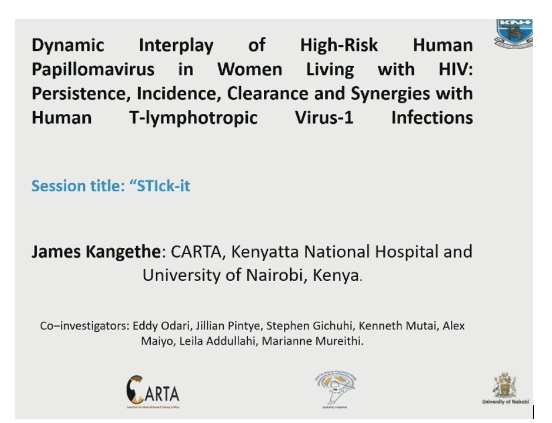
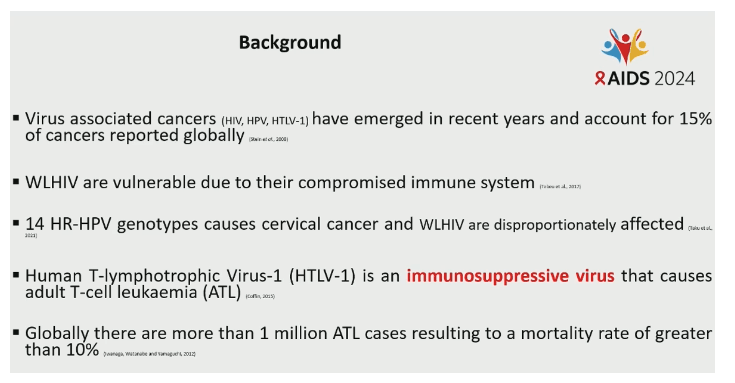
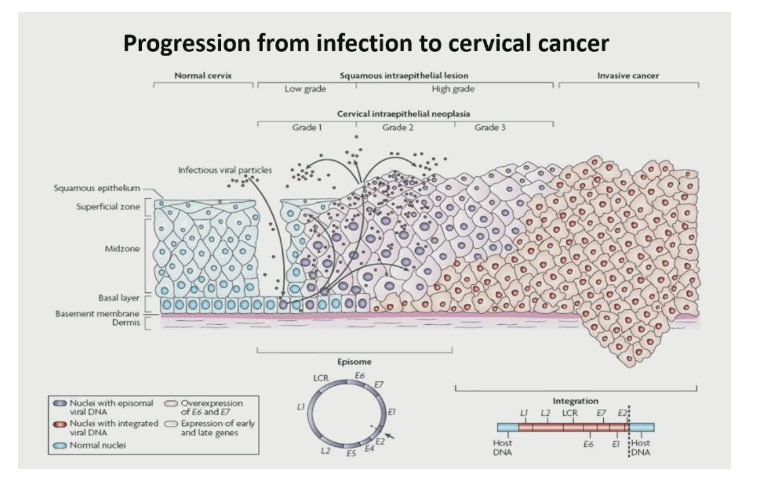
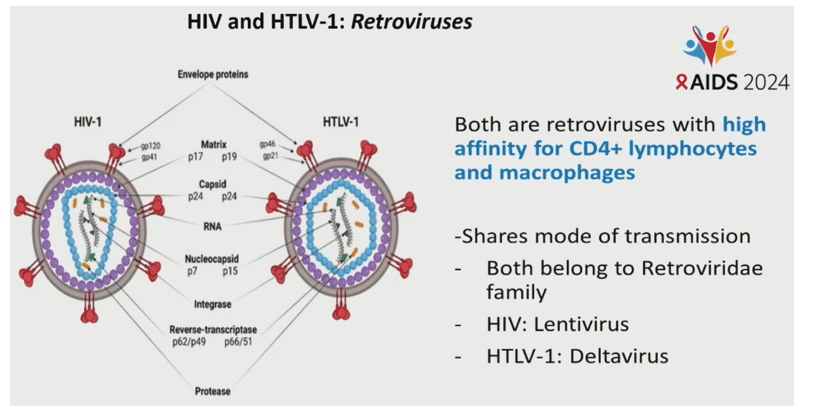
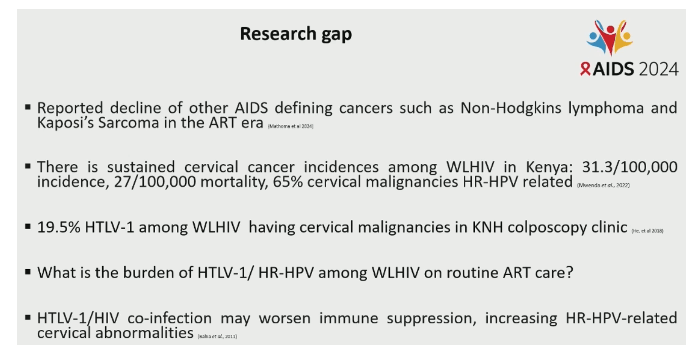
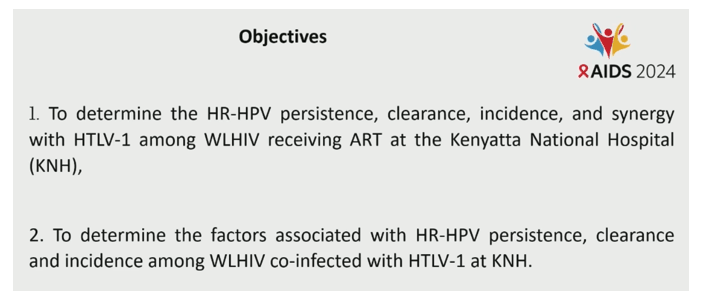
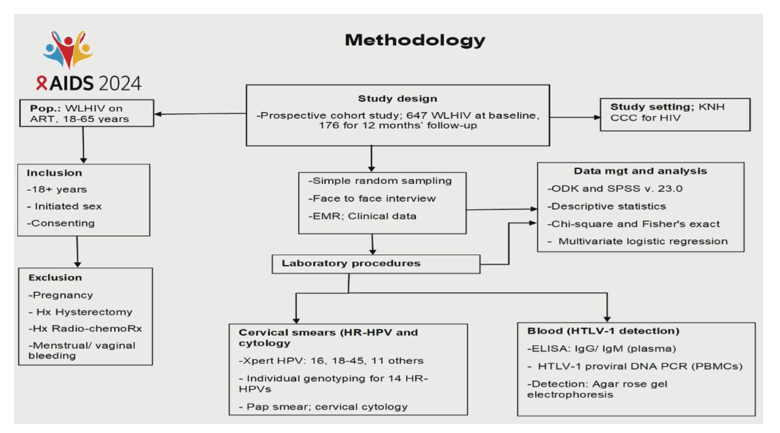
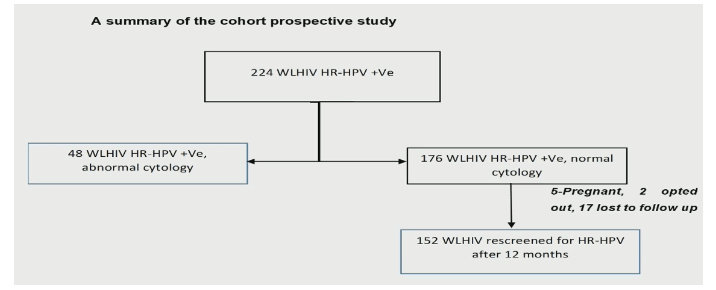
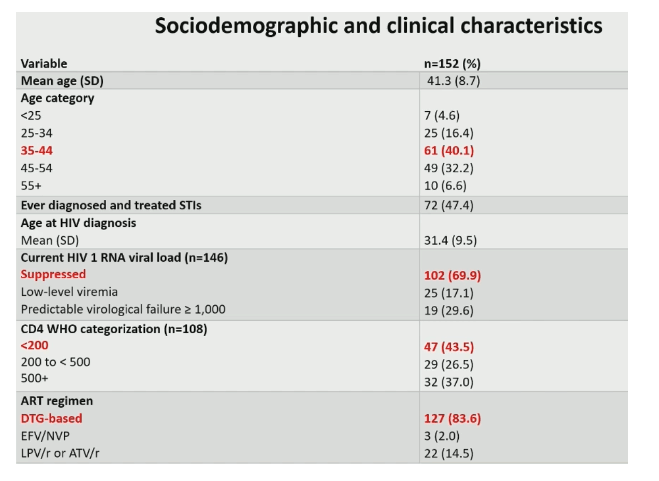
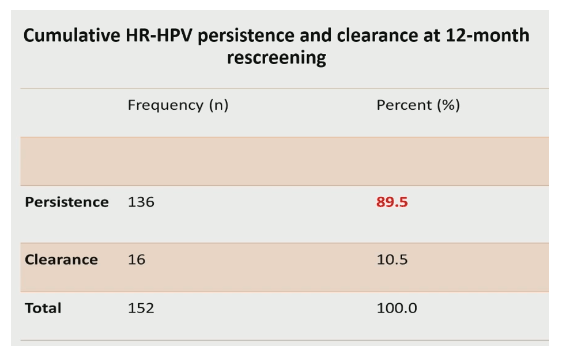

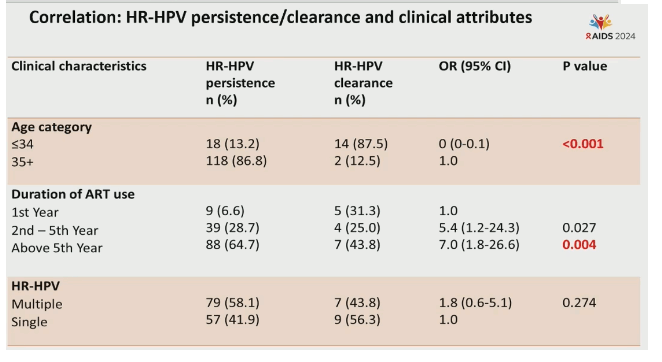
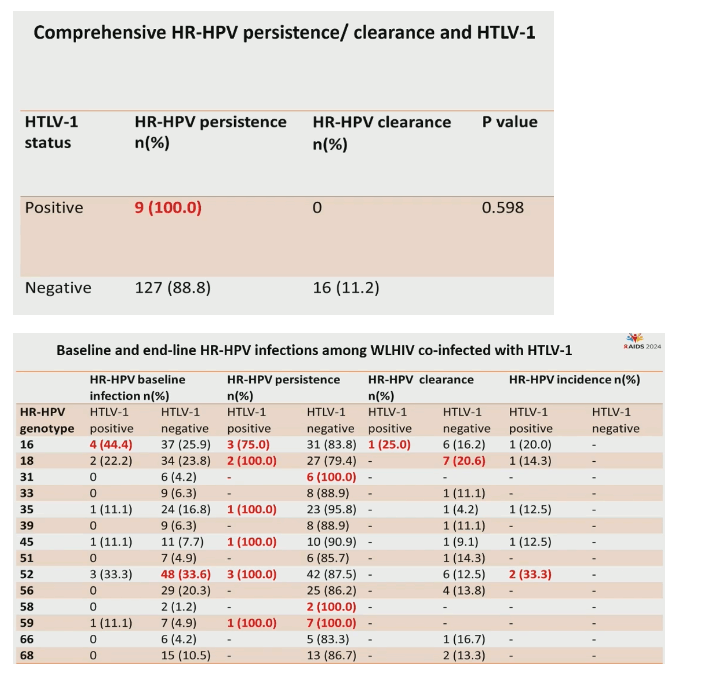
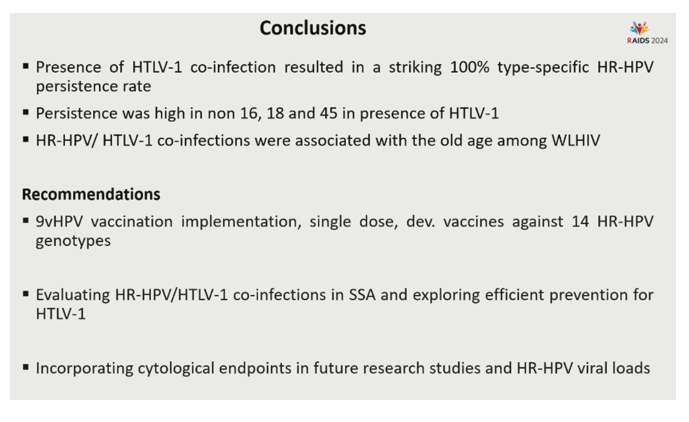
|
| |
|
 |
 |
|
|